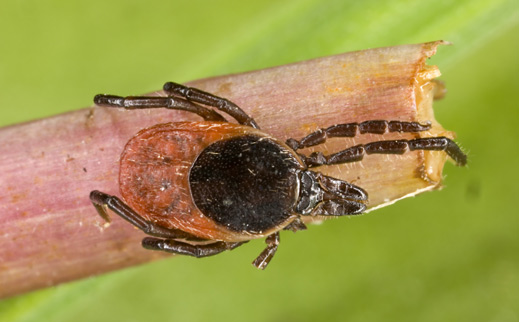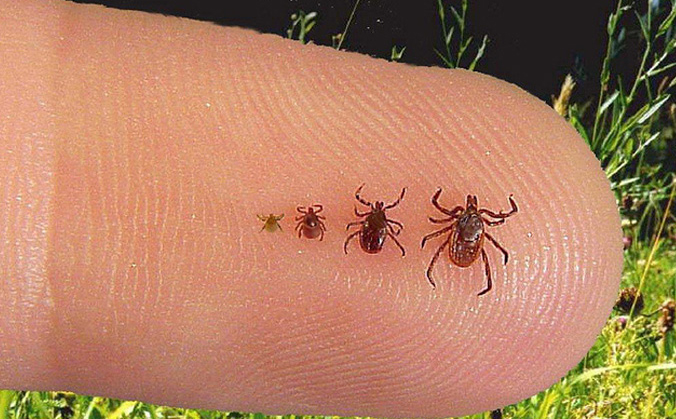- Misdiagnosing Lyme disease
- References
Misdiagnosing Lyme disease
Misdiagnosing Lyme disease
The Great Imitator
The Borrelia burgdorferi (Bb) spirochete is an evasive organism which can penetrate virtually any organ or system in the body, including the brain and central nervous system, joints, muscles and heart. Lyme disease symptoms may be similar to other medical conditions, making diagnosing a challenge. For this reason, Lyme disease and syphilis have both been coined “the great imitator.”

Lyme disease and syphilis have both been coined “the great imitator.”
Patients with Lyme disease have been incorrectly diagnosed with: multiple sclerosis (MS), fibromyalgia, chronic fatigue syndrome, autoimmune diseases including lupus and rheumatoid arthritis [1-7], polymyalgia rheumatica, thyroid disease, and psychiatric disorders, among others.
Fatigue, insomnia, and myalgias are seen in both Fibromyalgia and Lyme disease. Chronic Fatigue Syndrome symptoms are often seen in Lyme disease patients and include severe fatigue, impaired memory and concentration, sleep disturbance, myalgias, and arthralgias.
Steere et al. described Lyme disease cases that were misdiagnosed as Juvenile Rheumatoid Arthritis (JRA). [8]
Nowakowski and Feder reported cases misdiagnosed as cellulitis. [9,10]
Plotkin described a 39-year-old male with a retropopliteal rash that progressed, within three weeks to Lyme disease, with a loss of consciousness and a complete heart block that required insertion of a transvenous cardiac pacemaker. [11]
Lyme disease has been mistaken for multiple sclerosis (MS). [12,13] In fact, one author estimated that 5% – 10% of patients presumed to have MS suffered from other conditions including Lyme disease. [14]
Three cases of neuroborreliosis were initially misdiagnosed as anterior ischemic optic neuropathy caused by giant cell arteritis.
Neuropsychiatric presentations, including depression, anxiety, and rage, have been identified in both acute and chronic Lyme disease cases. [15]
Lyme disease has also been mistaken for polymyalgia rheumatica [16,17], sports-related injuries [18], and common medical conditions such as sinusitis, Epstein-Barr syndrome, rotator cuff tear, meniscus tear, edema, cellulitis, and pericarditis. [19]
References
References – Misdiagnosis of Lyme disease
- Goldenberg DL. Fibromyalgia, chronic fatigue syndrome, and myofascial pain syndrome. Curr Opin Rheumatol, 6(2), 223-233 (1994).
- Clauw DJ, Chrousos GP. Chronic pain and fatigue syndromes: overlapping clinical and neuroendocrine features and potential pathogenic mechanisms. Neuroimmunomodulation, 4(3), 134-153 (1997).
- Naesens R, Vermeiren S, Van Schaeren J, Jeurissen A. False positive Lyme serology due to syphilis: report of 6 cases and review of the literature. Acta Clin Belg, 66(1), 58-59 (2011).
- Cimmino MA, Salvarani C. Polymyalgia rheumatica and giant cell arteritis. Baillieres Clin Rheumatol, 9(3), 515-527 (1995).
- Paparone PW. Polymyalgia rheumatica or Lyme disease? How to avoid misdiagnosis in older patients. Postgrad Med, 97(1), 161-164, 167-170 (1995).
- Schwartzberg M, Weber CA, Musico J. Lyme borreliosis presenting as a polymyalgia rheumatica-like syndrome. Br J Rheumatol, 34(4), 392-393 (1995).
- Daoud KF, Barkhuizen A. Rheumatic mimics and selected triggers of fibromyalgia. Curr Pain Headache Rep, 6(4), 284-288 (2002).
- Steere AC, Malawista SE, Snydman DR et al. Lyme arthritis: an epidemic of oligoarticular arthritis in children and adults in three connecticut communities. Arthritis Rheum, 20(1), 7-17 (1977).
- Feder HM, Jr., Whitaker DL. Misdiagnosis of erythema migrans. Am J Med, 99(4), 412-419 (1995).
- Nowakowski J, McKenna D, Nadelman RB et al. Failure of treatment with cephalexin for Lyme disease. Arch Fam Med, 9(6), 563-567 (2000).
- Plotkin SA. Correcting a public health fiasco: The need for a new vaccine against Lyme disease. Clinical infectious diseases : an official publication of the Infectious Diseases Society of America, 52 Suppl 3, s271-275 (2011).
- Brinar VV, Habek M. Rare infections mimicking MS. Clin Neurol Neurosurg, (2010).
- Calabresi PA. Diagnosis and management of multiple sclerosis. Am Fam Physician, 70(10), 1935-1944 (2004).
- Trojano M, Paolicelli D. The differential diagnosis of multiple sclerosis: classification and clinical features of relapsing and progressive neurological syndromes. Neurol Sci, 22 Suppl 2, S98-102 (2001).
- Fallon BA, Keilp JG, Corbera KM et al. A randomized, placebo-controlled trial of repeated IV antibiotic therapy for Lyme encephalopathy. Neurology, 70(13), 992-1003 (2008).
- Paparone PW. Polymyalgia rheumatica or Lyme disease? How to avoid misdiagnosis in older patients. Postgrad Med, 97(1), 161-164, 167-170 (1995).
- Schwartzberg M, Weber CA, Musico J. Lyme borreliosis presenting as a polymyalgia rheumatica-like syndrome. Br J Rheumatol, 34(4), 392-393 (1995).
- Jennings F, Lambert E, Fredericson M. Rheumatic diseases presenting as sports-related injuries. Sports Med, 38(11), 917-930 (2008).
- Cameron DJ. Consequences of treatment delay in Lyme disease. J Eval Clin Pract, 13(3), 470-472 (2007).

What Is Lyme Disease?
Lyme disease is a bacterial infection typically transmitted through the bite of an infected tick. It is one of the fastest growing infectious diseases in the country, and the steadily increasing number of cases has led many in the medical/scientific community and legislative arena to deem the disease a “public health crisis” and “epidemic”. learn more →

Signs and Symptoms
Lyme disease has been associated with numerous neurologic, rheumatologic and psychiatric manifestations. However, the full range of symptoms needed to recognize the disease may not be apparent to a physician during a routine examination. learn more →

About Ticks
Ticks are tiny parasites that feed on the blood of their hosts (humans and animals) in order to survive and advance to the next life cycle stage. Most ticks have four stages: egg, larva, nymph and adult. The larva and nymph need a blood meal to move to the next stage. Ticks are extremely small, with the nymph the size of a pinhead. learn more →


